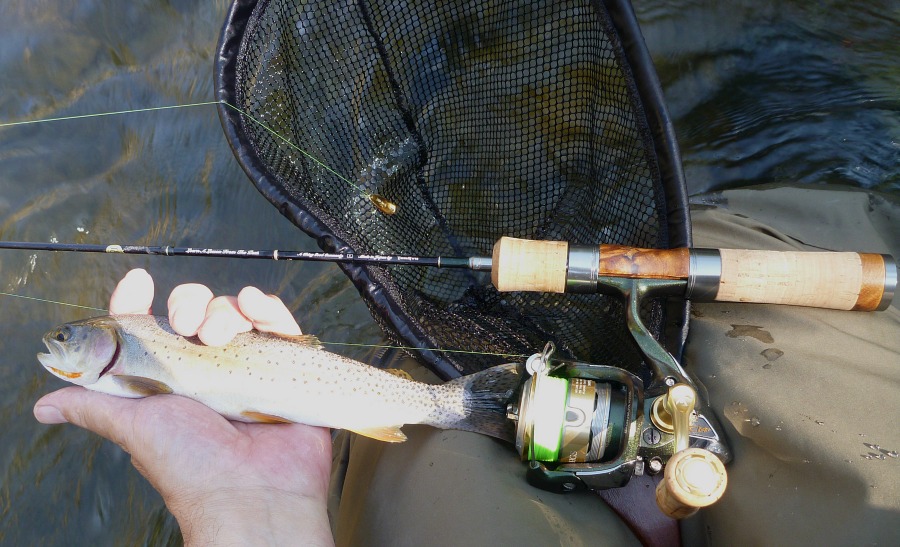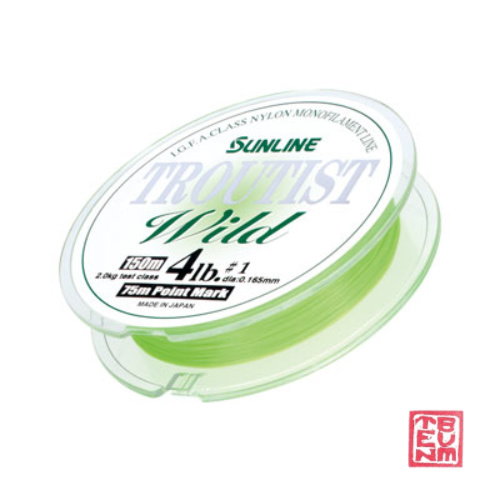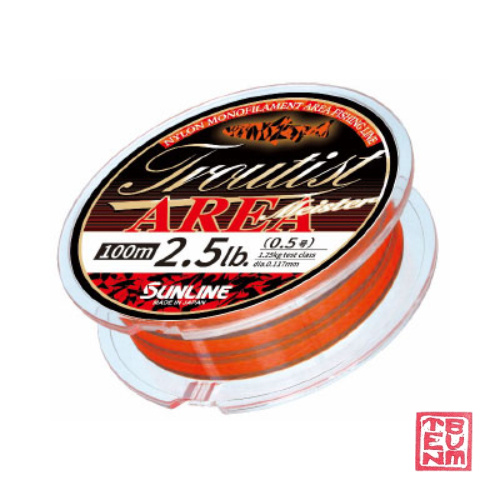Tariffs and Shipping Delays
All items that are in stock, listed to the right, are in the USA and are not subject to tariffs or shipping delays. If you want premium trout rods, they're here now.
JDM Nylon Line
JDM nylon line is in a class by itself. When I first picked up a spinning rod, back in the last century, I fished Stren line. Everyone fished either Stren or Trilene. Now that I have tried Japanese spinning line, I wouldn't fish either Stren or Trilene if it was free. There's that big a difference! I don't get to fish nearly as often as I would like, and trying to save a few bucks on a spool of line just isn't worth it to me. Life is too short.
For years, I have been a dedicated line watcher. I never fish with clear lines. There have been many, many times when I have detected a strike by seeing the line move even when I didn't feel a thing. Face it, if you are reeling in a lure, and a fish comes up from behind and takes it but doesn't stop or turn sharply to the side, you might not feel even a tap. Often you can see the line move, though. That is even more common when fishing slowly with small plastics. Seeing the line move sideways, without feeling a thing, happens a lot more than you would think if you've only fished with a line you can't see! If you only fish by feel, you will miss fish. More fish than you know.
I'm not sure that is the primary reason to use hi-vis JDM nylon line, though, at least if you fish streams. Perhaps the major reason for hi-vis
line is so you can see the flight of the lure and stop your cast when
the lure is over your target. You definitely want to stop the lure's
flight if it has overshot your target and is heading for a streamside
bush. Save one sinking minnow lure and you have saved enough to pay for the JDM line!
The
lines that Sunline and Varivas have designed for fishing in the Areas (stocked
pay-to-fish lakes) are either clear or smoke gray, or have alternating
lengths of hi-vis and lo-vis line. On the one hand, the Areas get very
heavy fishing pressure, so you want to minimize the chance that the fish will see your line. On the other hand, though, when casting into a
lake, you rarely have to worry much pinpoint casting, and almost never
about the trees and bushes on the far shore! The line is visible, but it is not nearly as visible as the hi-vis line designed for stream fishing.
 Sunline Troutist Wild 3lb line, Tenryu RZI50UL-4 rod, Shimano Cardiff CI4+ C2000HGS reel, Daiwa Crusader 2.5g spoon, wild cutthroat trout.
Sunline Troutist Wild 3lb line, Tenryu RZI50UL-4 rod, Shimano Cardiff CI4+ C2000HGS reel, Daiwa Crusader 2.5g spoon, wild cutthroat trout.I make it a practice to add some clear tippet to the end of the hi-vis line, just in case the bright line might alert the fish. I'm not convinced that it does, or at least, not convinced that it does all the time or in all conditions. Once while fishing a small stream in Montana I ran out of tippet so I tied the bright green Sunline Troutist Wild spinning line directly to my spoon. I kept catching fish at about the same rate, so the wild cutthroats in that particular stream on that particular day clearly were not scared by the line.
I still add clear tippet, though - a length about equal to the distance from the rod tip to just in front of the reel - just in case. Maybe it's like wearing camo clothes when fishing streams. It might not help but it sure can't hurt!
 Sunline Troutist Wild
Sunline Troutist WildEasy to see.
Easy to cast.
Recommended for fishing streams.
 Sunline Area Meister
Sunline Area MeisterNew technology: same strength with smaller line diameter.
Alternating 2m smoke gray, 8m fluorescent orange. No need to tie on a clear tippet.
Primarily for lakes,
Troutist Wild 3 lb test
Troutist Wild 4 lb test
Just one in stock
(if the button says Add to cart)
Area Meister 2 lb test
Area Meister 3 lb test
If the button says Add to cart, the item is in stock.
Stock Sunline photo. Line wt. is as described below the button.
Sunline Troutist lines are made in Japan.
Shipping to US address - $5 via USPS Ground Advantage
Finesse-Fishing Home > Finesse Spin Fishing > JDM Spinning Line > JDM Nylon Line
Header photo: Tenryu Rayz RZ4102B-UL, Shimano Calcutta Conquest BFS-HG ('17)
Warning:
The hooks are sharp.
The coffee's hot.
The fish are slippery when wet.
Whatever you do, do it with finesse!